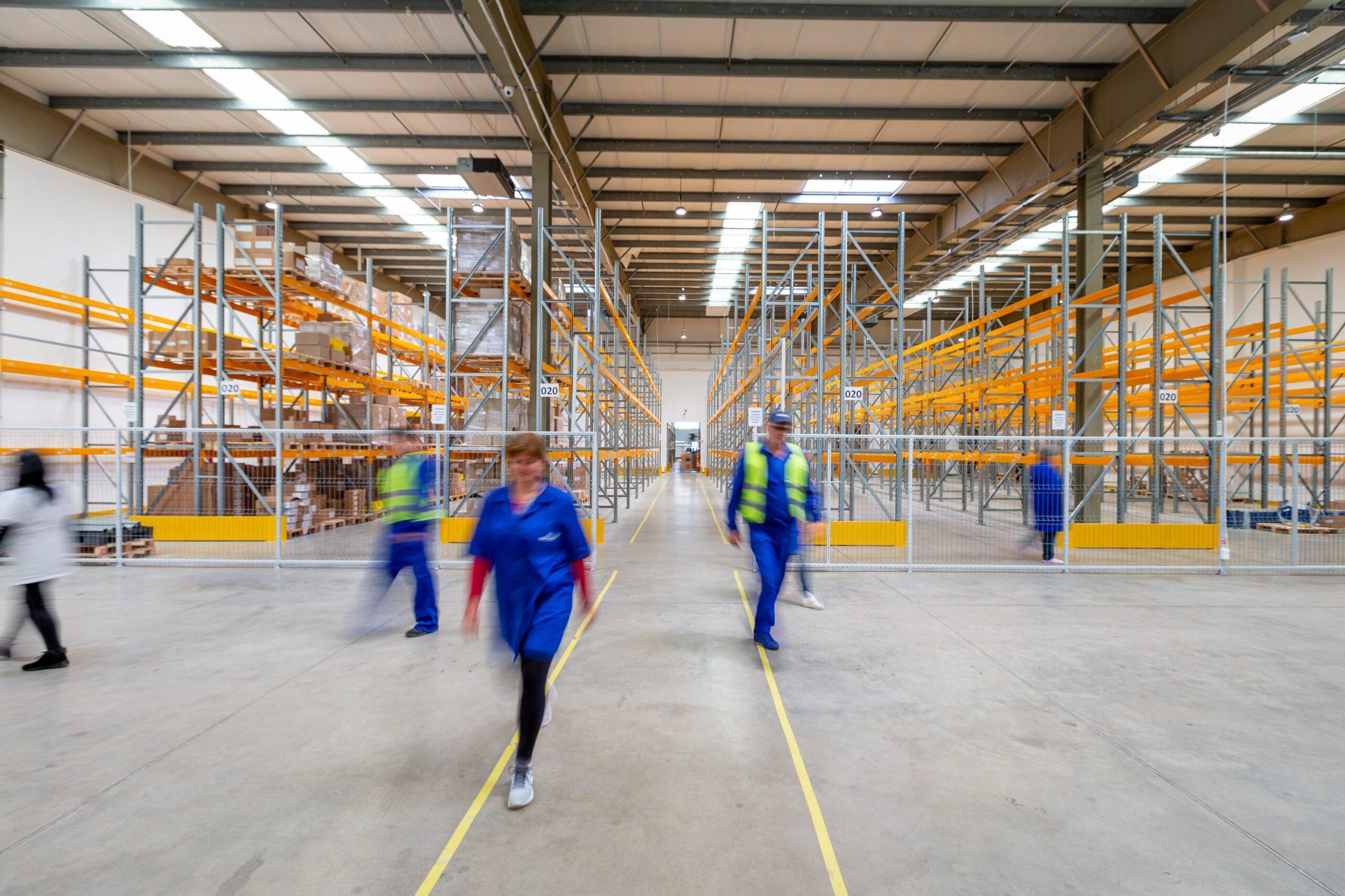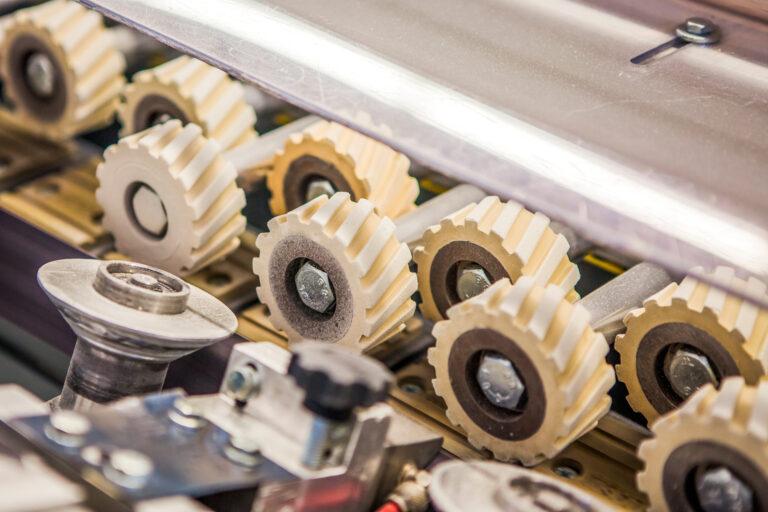Overcome Turnover Turmoil in Manufacturing & Light Industrial Settings
While supply chain issues and inflation are still impacting the industry, gains have been made in improving plant operations.
However, one significant barrier continues to thwart productivity goals: high employee turnover.
In 2021,the average manufacturing turnover rate was 39.9%. By 2028, 2.5 million manufacturing jobs are estimated to go unfilled. Even now, the industry is still struggling to add back 570,000 of the jobs lost during the pandemic.
From a negative impact on product quality to decreasing margins in a highly competitive marketplace, fewer workers present great challenges for today’s manufacturing and light industrial organizations. Those looking to hire in these industries say it is 36% harder to find talent today than in 2018, and 77% of manufacturing executives expect to have trouble attracting and retaining workers this year and beyond.
That’s why understanding why turnover puts current and future operations in jeopardy, and how you can turn the tables on employee exits, goes a long way toward future-proofing your company in uncertain times.
Understand turnover so you can turn it around
Turnover tensions are not unique to manufacturing and light industrial firms. Organizations across all industries are still feeling the effects of the pandemic-prompted “great resignation.”
Last year, an astounding 47.8 million workers quit their jobs, an average of nearly 4 million each month. This mass worker exodus shows no signs of slowing in 2022. So far this year, 4.25 million people quit their jobs in January 2022 (up from 3,3 million in 2021), and a record 4.5 million Americans quit their job this past March.
Manufacturing and light industrial companies can attribute more than their fair share of attrition to this continuing trend. Of all industries, manufacturing has seen the biggest increase in workers quitting—a nearly 60% jump—compared to before the pandemic.
But the issues that accelerated the pace of employee walk-outs existed well before the last two years. The pandemic merely gave them a brighter spotlight.
According to a recent Pew Research Center survey, at least 33% of workers in general who quit last year did so for three major reasons:
- Low pay (63%)
- No opportunity for advancement (63%)
- Feeling disrespected at work (57%)
For manufacturing and light industrial employees, these factors also apply, as do greater workplace safety and more flexible schedules. Safety and flexibility are, arguably, even more important now, given manufacturing and industrial employees cannot work from home, and are under more work stress with fewer coworkers to share the workload.
Understanding the factors that prompt employees to stay or go in this current workforce climate could help you stem the outflow.
Realize what’s lost when employees leave
There’s more than one way for an employee to leave a job, and there’s more than one way it impacts your organization when they do.
Getting a complete picture of how your company is impacted by worker loss helps heighten motivation to turn the turnover trend around.
When employees are emotionally gone
Your workers might physically still show up for their jobs, but have they brought their motivation with them? According to WHO, pre-Covid-19 estimates reveal nearly $1 trillion in economic productivity is lost annually from depression and anxiety alone.
During- and post-pandemic estimates would likely be higher. This is testament to the fact that employees who are emotionally absent could have as much negative impact on plant operations as those who are no longer employed at all.
It’s not surprising that more workers are experiencing mental health struggles, given increased rates of burnout. A 2021 APA survey found “nearly 3 in 5 employees report negative impacts of work-related stress, including lack of interest, motivation, or energy and lack of effort at work, while 36% report cognitive weariness, 32% report emotional exhaustion, and 44% report physical fatigue.”
Given the physical nature of manufacturing and industrial jobs, fatigue, cognitive weariness and lack of energy could be harmful to employee well-being and your bottom line. Addressing these issues early on, and ensuring workers know they have support, can help keep an employee who is emotionally gone from becoming one that is physically gone.
When employees physically leave
Sure, when a worker leaves you have one less person to get the job done. But employee turnover, especially if it’s ongoing, impacts your organization in so many more ways.
- Loss of intellectual capital. When employees leave, they take their experience with them. And they don’t always share their knowledge on the way out. Depending on how long they were employed or what role they held, that insight about processes, technologies, client relationships and company operations could be permanently lost. Even if a replacement is found, if that person is younger or less experienced, it could impact efficiency, operations and business connections.
- Loss of monetary capital. It’s predicted that every time a business replaces a salaried employee, it costs 6 to 9 months’ salary on average. For hourly workers, it costs an average of $1,500 per employee. According to Work Institute, “67% of costs are soft costs related to interview time and lost knowledge, and 33% of costs are hard costs such as recruiting, background checks, drug screen and temp worker fees.” There are also costs related to onboarding and training, as well as those that can result from production errors and quality issues. In addition, today’s workers often demand higher salaries, leading new incoming workers to cost an organization more than their outgoing counterparts.
- Loss of workforce morale. Times are already stressful and workers are feeling the strain, impacting morale. High turnover can lower employee morale further, leading to a downward spiral of increasingly high turnover and lowering morale. Workers losing coworkers they felt comfortable with and admired could make them question why they are staying, potentially fostering distrust, decreasing motivation, and disrupting company culture.
“According to a study published by Deloitte and The Manufacturing Institute, the worker shortage will hurt revenue, production and could ultimately cost the US economy up to $1 trillion by 2030.” You can’t turn the entire industry around, but you can take a moment to look closely at your organization to see whether minor tweaks or more major changes could improve your retention rate.
After all, the “great resignation” will one day course correct, but the issues prompting it will likely remain. If you don’t address those issues now, you could still be at risk for high turnover and halted productivity for years to come. In a highly competitive marketplace, that’s a risk you truly cannot afford.







